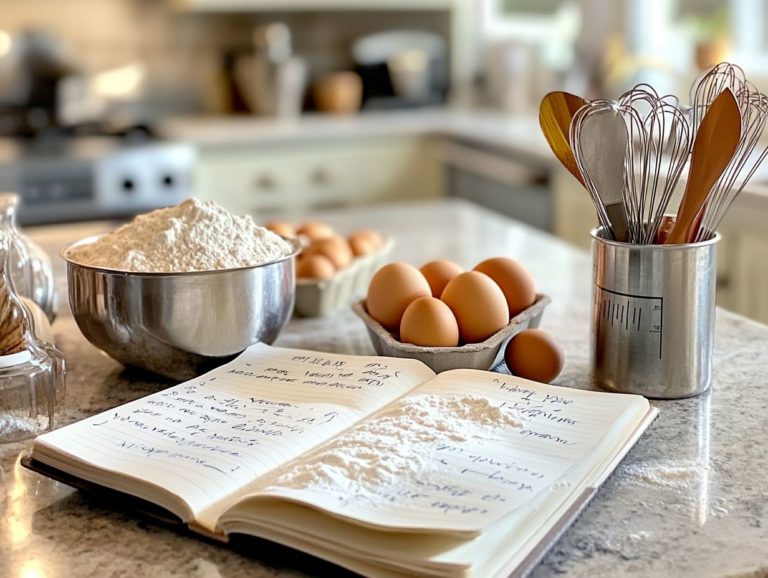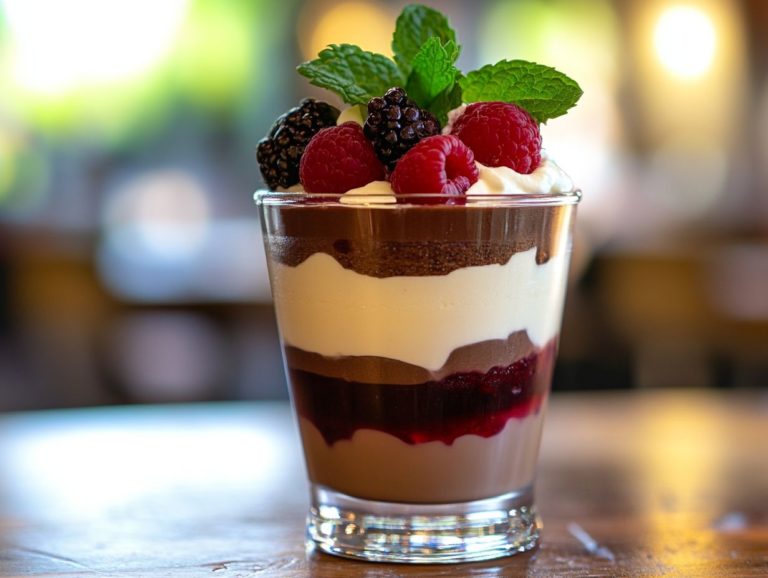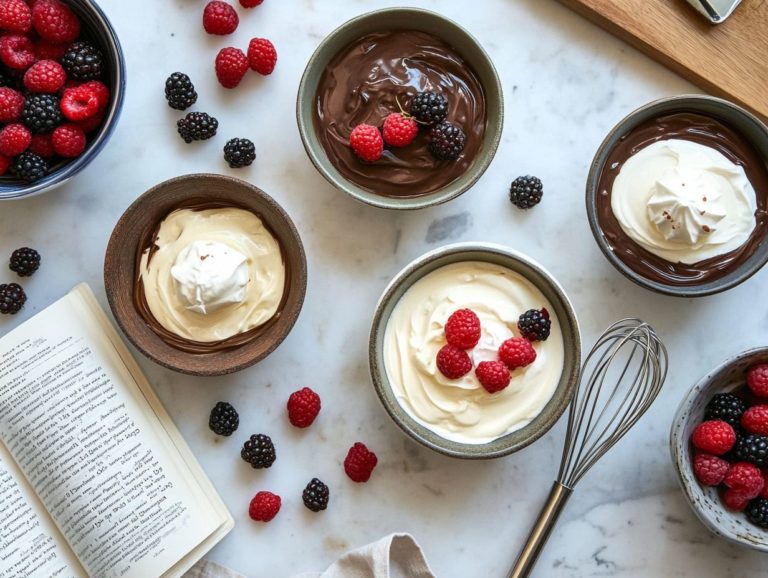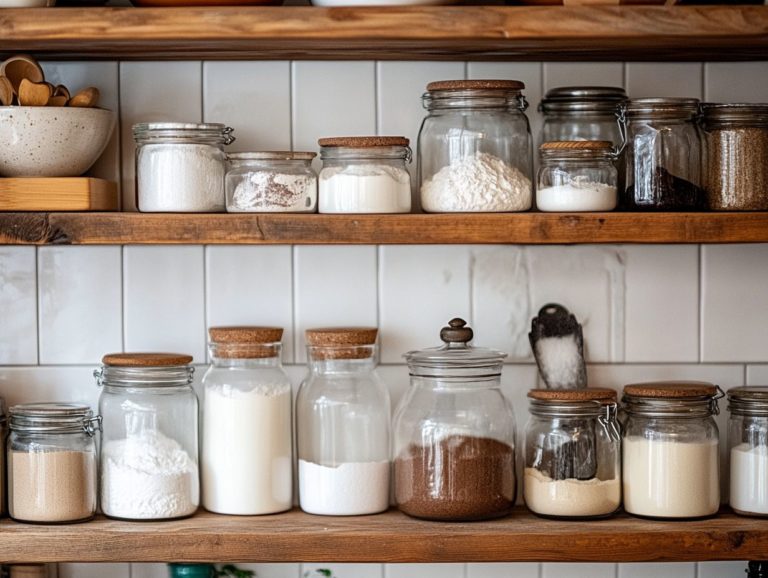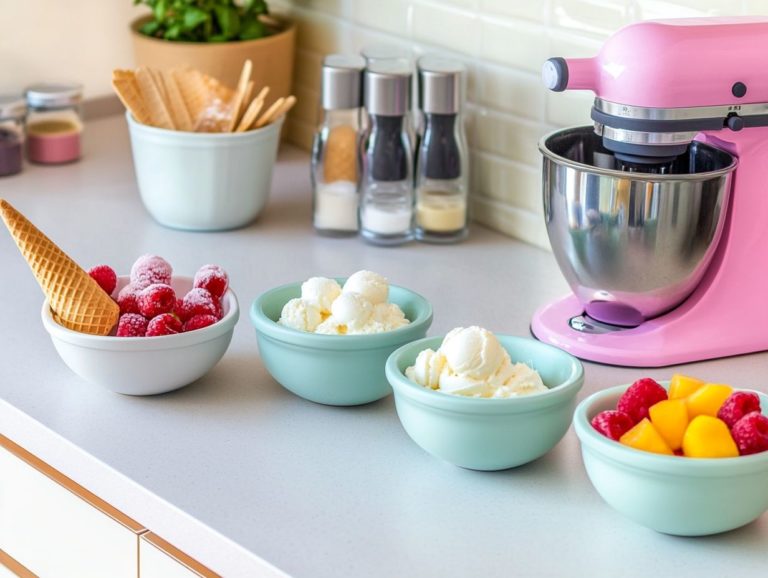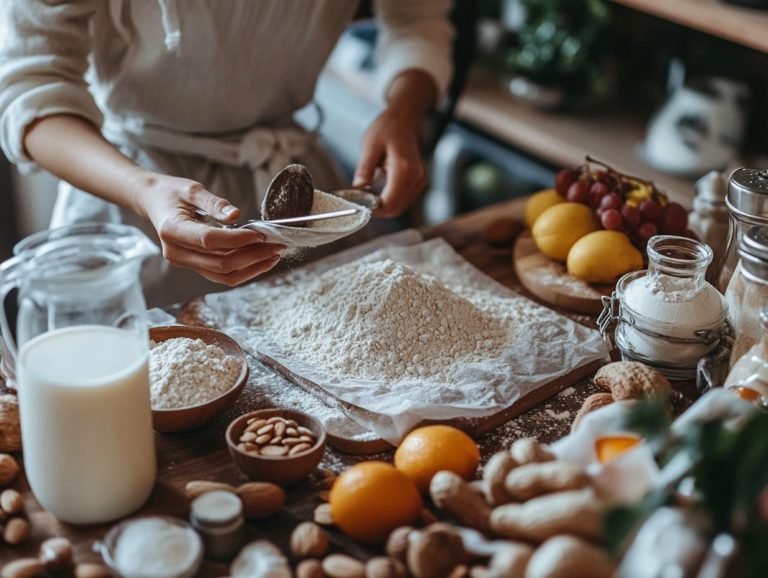How to Achieve the Perfect Dessert Texture?
When considering desserts, it s essential to recognize that texture holds equal importance to flavor. A beautifully balanced dessert not only delights the palate but also creates an unforgettable experience that leaves you yearning for more. Whether it s a restaurant-quality pastry or a simple cake recipe, understanding textures can make a good impression on any diner.
By grasping what constitutes the ideal dessert texture and the key factors that influence it, you can elevate your baking skills to new heights, achieving delicious results and meeting guest expectations.
This article delves into the intricacies of texture, exploring everything from ingredient selection to baking techniques, and offers practical tips to assist you in crafting delectable desserts that boast the perfect touch. Whether you re exploring modern techniques or classic flavors, the journey toward dessert creativity is filled with sweet temptations.
Contents
- Key Takeaways:
- What Is the Perfect Dessert Texture?
- Why Is Texture Important in Desserts?
- What Factors Affect Dessert Texture?
- How to Achieve the Perfect Dessert Texture?
- 1. Choosing the Right Ingredients
- 2. Proper Mixing Technique
- 3. Correct Baking Time and Temperature
- 4. Proper Cooling and Storage
- Frequently Asked Questions
- What exactly is the perfect dessert texture?
- How can I achieve the perfect dessert texture?
- What are common mistakes that can ruin a dessert’s texture?
- How does the type of flour affect the texture of a dessert?
- What are some tips for achieving the perfect texture in a gluten-free dessert?
- How can I fix a dessert with a disappointing texture?
Key Takeaways:

- Choose high-quality ingredients for the best dessert texture.
- Use proper mixing techniques to ensure a smooth and evenly textured dessert.
- Pay attention to baking time and temperature to achieve the desired texture.
- Consider the visual appeal of your final plated dessert for an enhanced diner experience.
What Is the Perfect Dessert Texture?
The ideal dessert texture is a masterful fusion of elements that together create an unforgettable experience, elevating your enjoyment of chocolate pudding or any dessert concept you choose. From sweet desserts to exciting desserts, texture plays a key role in dessert building.
Texture is crucial in a dish; it shapes your dining experience and paves the way for flavor combinations that tantalize your palate. Achieving that creamy texture, for example, calls for a deft hand in dessert crafting and a keen understanding of the improvisational flair that defines the culinary arts. This improvising process allows pastry chefs to balance flavors and textures, creating unique flavors and experiences.
With the perfect balance of textures and flavors, even the simplest dessert can evolve into a memorable finale that leaves a lasting impression on your guests.
Why Is Texture Important in Desserts?
Texture is an essential element of desserts that can truly elevate your dining experience. It provides a delightful contrast of sensations that captivates your taste buds and enhances the overall flavor balance.
A well-crafted dessert, whether it s a velvety chocolate pudding or a sumptuous cake, should engage your senses, offering a delightful symphony of creamy, crunchy, and soft elements that turn each bite into a sweet temptation. When pastry chefs prioritize achieving the perfect texture, they create desserts that not only look exquisite but also evoke a strong sense of satisfaction, enhancing the realm of dessert creativity and overall satisfaction.
Take, for example, a delicate pavlova a masterpiece that combines a crispy outer shell with a soft and chewy interior, creating a pleasing contrast that beautifully complements fresh, fruity toppings. Similarly, a layered mousse cake harmonizes the richness of smooth chocolate with the lightness of airy cream, crafting a multi-dimensional tasting experience that delights the palate. These different textures contribute to a memorable dessert experience.
The visual appeal of these desserts is equally important; an artfully plated dish entices you even before the first bite, igniting your anticipation. This interplay of texture, flavor, and presentation is what makes the dessert course unforgettable, highlighting the essential role that texture plays in the culinary arts and in your overall dining satisfaction. Creative plating can enhance the flavor profile and make each dish a work of art.
What Factors Affect Dessert Texture?
Several factors influence dessert texture, each playing an essential role in the final outcome of your dish, whether you’re crafting a classic chocolate pudding or an innovative dessert masterpiece. Balancing flavors and textures is key to unique and exciting desserts.
The choice of ingredients is crucial. For example, using seasonal ingredients can elevate flavor profiles and enhance the desired texture. The mixing method you select, whether folding or whisking, directly affects how air is incorporated into the dish, influencing its lightness and creaminess.
Your baking technique and temperature are equally important, as they dictate the structure and doneness of your desserts. Lastly, the cooling and storage methods you employ can alter the texture over time, making it vital to grasp these variables when planning your desserts.
1. Ingredients
The choice of ingredients is essential for achieving that perfect dessert texture. High-quality and fresh components significantly define the final product. For example, using premium ingredients in your chocolate pudding ensures a rich and creamy texture that can impress any diner.
By selecting fresh dairy, like locally sourced cream and eggs, you can elevate even the simplest recipes and transform them into an indulgent experience. Seasonal fruits, such as strawberries in the spring or apples in the fall, not only brighten flavors but also add an appealing touch that entices the senses beyond just taste.
When sourcing your ingredients, consider visiting farmers’ markets or cultivating relationships with local purveyors who prioritize quality. Always keep an eye out for organic or free-range options when available, as these often provide superior taste and freshness. This not only elevates your dessert recipes but also aligns with modern culinary inspiration.
Remember, the foundation of exceptional desserts lies in the care you take to select each component.
2. Mixing Method
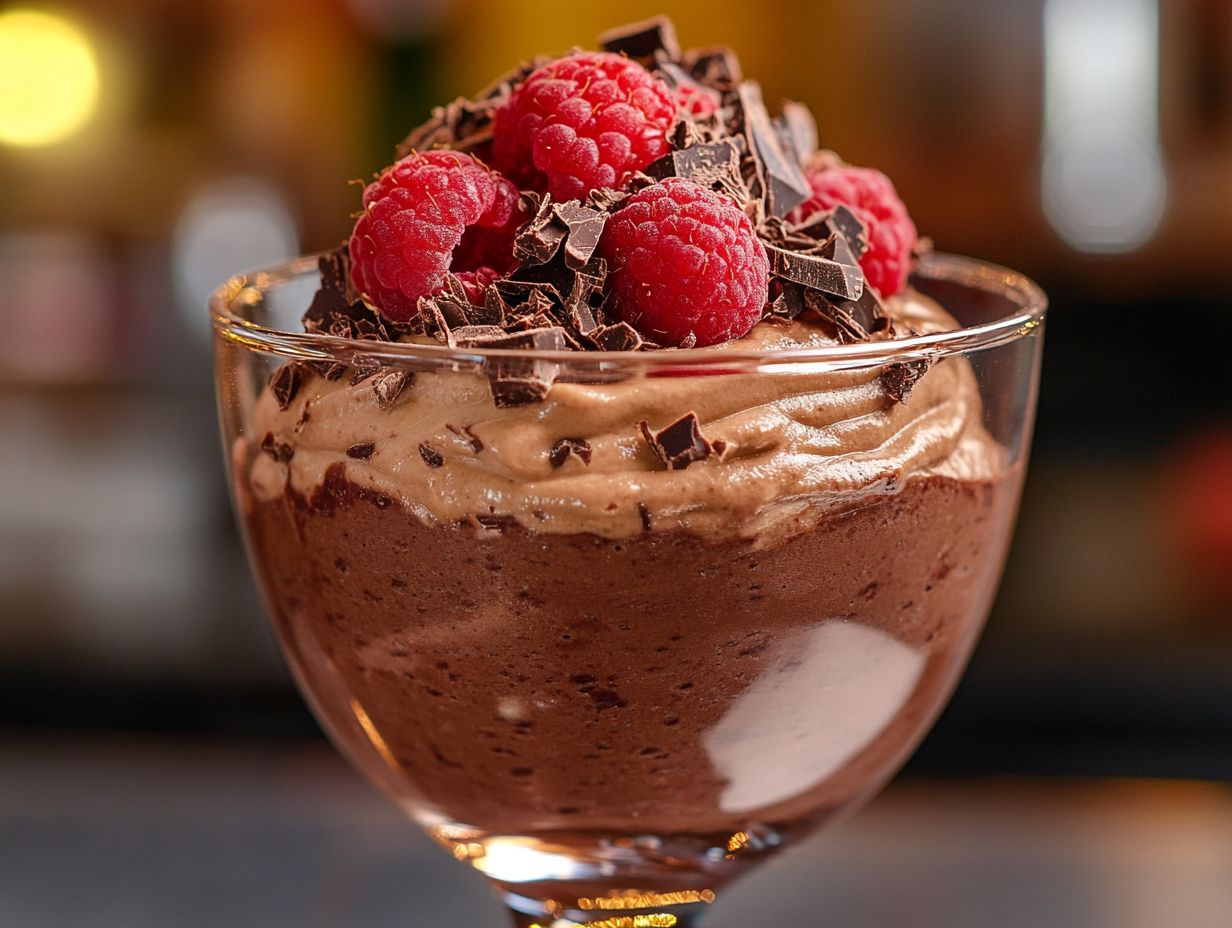
The mixing method you choose is crucial for achieving your desired dessert texture, as it directly impacts the incorporation of air, moisture, and overall consistency. Different techniques like folding, whisking, or beating create a stunning array of textures. Proper technique ensures that the dessert elements come together for the perfect texture contrast.
If you want a light and airy mousse, proper folding is essential to maintain that fluffy structure. On the other hand, when making chocolate pudding, gentle stirring is key to achieving that creamy, smooth finish. The right mixing method elevates the texture and allows the flavors to meld beautifully, contributing to the overall success of your dessert.
Mastering these techniques will take your baking skills to the next level! For example, the creaming method the process of beating butter and sugar together until light and fluffy is often employed in cookies and cakes. This technique introduces air into the mixture, resulting in a lighter end product that can beautifully contrast with richer ingredients like chocolate chunks or dried fruits.
Conversely, employing a method like the straight dough approach can yield a dense, chewy cookie that perfectly captures the essence of spices or robust flavors. Understanding these methods enhances your ability to improvise and adapt to different dessert recipes, whether simple or complex.
By mastering these various mixing methods, you can manipulate the textures of your creations and harmonize the flavor profiles, ensuring that every dessert you craft is not just a treat but a memorable experience. From plated dessert presentations to intricate dessert structures, mastering these techniques is integral to achieving culinary success.
3. Baking Technique
Baking technique plays a crucial role in shaping the structure and texture of your desserts. The temperature and duration of baking are essential factors in achieving the perfect outcome.
Precise techniques can help create treats that are both visually appealing and delicious. Souffl s demand precise timing; remove them just as they puff for a light and airy texture. Denser desserts like cheesecakes thrive with a slow bake to prevent cracking.
These techniques are crucial for holiday dinners when memorable experiences matter.
4. Cooling and Storage
Proper cooling and storage methods are vital for maintaining your desserts’ textures. This prevents changes that could dilute the experience.
For instance, cool chocolate pudding to set its creamy texture without a crust. Some desserts require refrigeration to stay fresh.
Airtight containers are essential for preventing moisture loss and maintaining texture. This ensures your desserts remain as delicious as when they were made.
Understanding cooling temperatures for various desserts is crucial. Cakes should cool on racks for airflow.
Custards thrive with gradual cooling in the fridge. Many bakers recommend freezing pastries right after baking to lock in freshness.
Be mindful: improperly wrapped frozen desserts can suffer from freezer burn, ruining their texture and flavor.
How to Achieve the Perfect Dessert Texture?
Achieving the perfect dessert texture is a delicate balance of art and science. This blend requires techniques, quality ingredients, and precise execution.
Each dessert recipe presents unique challenges and opportunities, whether it s creamy chocolate pudding or chewy brownies.
Master the principles of mixing, baking, and cooling to elevate any dessert into a memorable culinary experience.
1. Choosing the Right Ingredients
Choosing the right ingredients is the cornerstone of achieving the perfect dessert texture. Selecting quality ingredients not only enhances flavors but also significantly impacts the final texture of your dish. For instance, opting for fresh, seasonal ingredients can provide a unique flavor profile and heighten the overall appeal of your dessert, making it a more exciting experience for diners.
The consistency and type of ingredients, whether it s cream, eggs, or flour, play a crucial role in enhancing the texture of your recipes, allowing for creative plating and innovative desserts that truly leave a lasting impression.
By carefully sourcing your ingredients from local farmers markets or specialty shops, you can ensure that only the freshest produce and highest-quality dairy products find their way into your creations. This approach not only supports local agriculture but also guarantees that your ingredients are at their peak ripeness, further elevating taste and texture.
Experimenting with different sugars, like brown or raw, can influence both sweetness and texture, transforming a basic recipe into an exceptional culinary experience. Incorporating seasonal fruits or herbs can add delicate nuances to your presentation, inviting customers to indulge in a visually stunning dish that s as delightful to look at as it is to savor.
2. Proper Mixing Technique
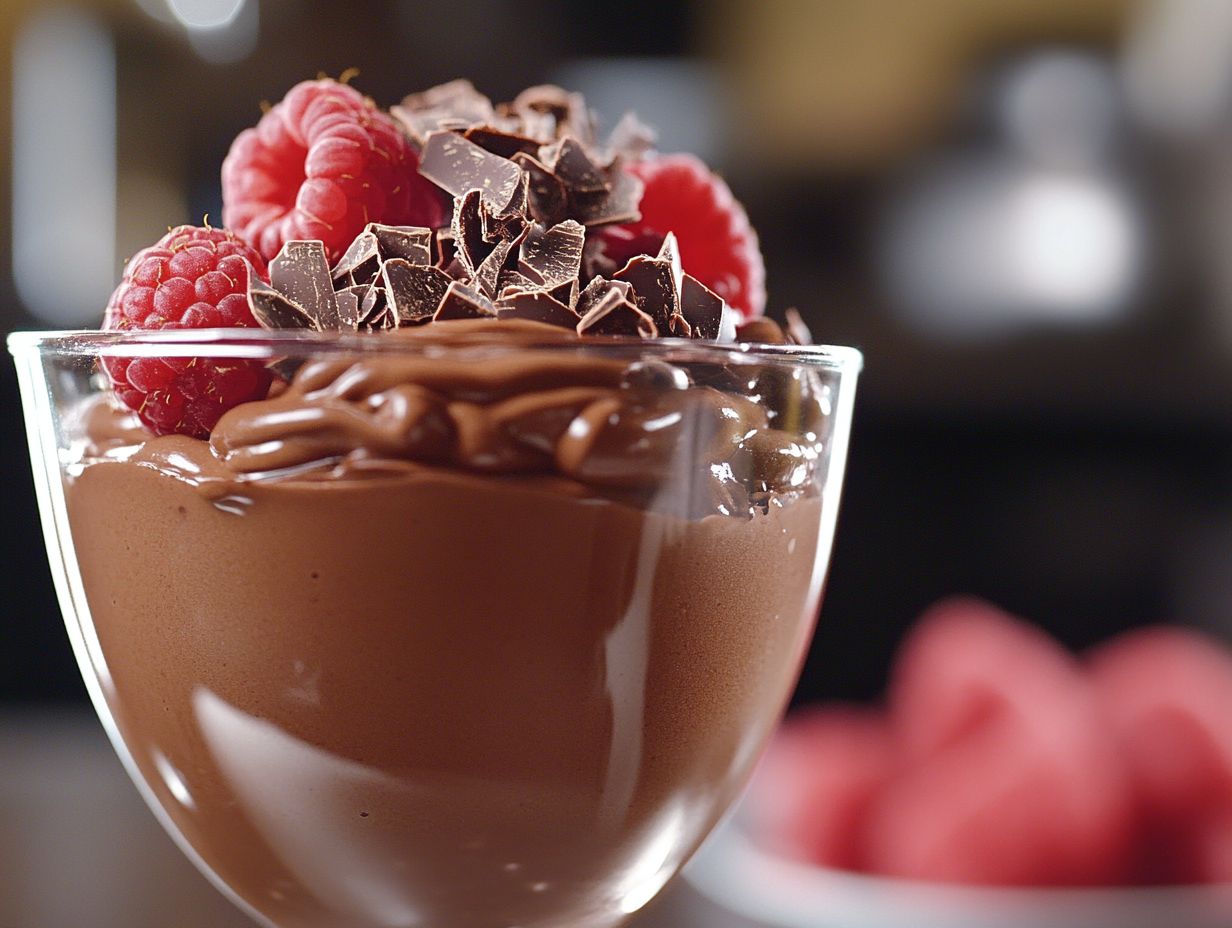
Using the right mixing techniques is key for achieving the desired texture in your desserts, as it fundamentally shapes how your ingredients blend and interact to create a uniform mix. Different methods like creaming, folding, or whisking yield diverse results.
For instance, when you cream butter and sugar, you re incorporating air, producing a light and airy texture. Conversely, gentle folding helps retain the creamy consistency of delicate creations like mousse or chocolate pudding. By mastering these techniques, you can achieve specific textures that not only enhance flavor but also elevate the overall dining experience.
Techniques such as whipping egg whites generate a foam crucial for meringues and souffl s, resulting in a delicate, airy finish that melts in your mouth. On the flip side, mixing dough by hand or using a stand mixer on low speeds can create a denser texture, perfect for treats like brownies or pound cakes that need a sturdier structure.
Each technique affects not just the texture but also the final appearance and flavor release, making it vital for you to master these methods to bring your dessert visions to life.
3. Correct Baking Time and Temperature
Setting the right baking time and temperature is absolutely crucial for achieving the perfect texture in your desserts. It influences everything from the richness of a chocolate pudding to the fluffiness of a cake.
Take a classic cheesecake, for example. It demands a gentle baking temperature to develop that velvety smooth consistency. On the other hand, cr me br l e requires careful attention to both time and the water bath conditions to prevent any unwanted curdling.
When you re working on a perfect pie crust, it s essential to strike that balance bake it long enough to achieve that delightful flakiness without letting it burn. Using an oven thermometer can help you maintain accurate temperatures, and investing in a reliable timer will make tracking baking durations a breeze.
Precision matters just a few minutes can make or break your dessert! When you closely monitor these two vital factors, you’ll find that consistency in results becomes much more attainable. This allows you to make adjustments based on the unique characteristics of your ingredients. With a bit of practice, you’ll create mouthwatering desserts that will impress everyone and boast an impeccable texture.
4. Proper Cooling and Storage
Implementing proper cooling and storage techniques is essential for maintaining the quality of your desserts and ensuring that the desired texture is preserved right up until serving. The cooling methods will vary depending on the dessert you re working with. For instance, chocolate pudding should be cooled slowly to prevent condensation. On the other hand, cakes benefit from being turned out onto a wire rack to cool evenly.
Using proper storage techniques, such as airtight containers or wrapping pastries, helps retain their texture and prevents them from drying out. This allows your guests to savor the complete dessert experience.
Knowing how each dessert behaves helps you tackle storage issues. For example, mousses should reside in the refrigerator but be covered lightly to avoid developing a hardened layer on top. In contrast, cookies can be stored at room temperature alongside a slice of bread to maintain their moisture.
Remember to watch how long each dessert stays fresh for the best experience! Cream-filled pastries should be enjoyed quickly to ensure freshness, whereas cookies can last longer without sacrificing their delightful crunch.
By embracing these practical recommendations, you can ensure that each dessert not only looks exquisite but also delivers the expected texture upon serving.
Frequently Asked Questions
What exactly is the perfect dessert texture?
The perfect dessert texture is a balance between being moist, soft, and smooth, with just the right amount of chewiness or crunchiness depending on the type of dessert. It should also be visually appealing and not too dense or heavy.
How can I achieve the perfect dessert texture?
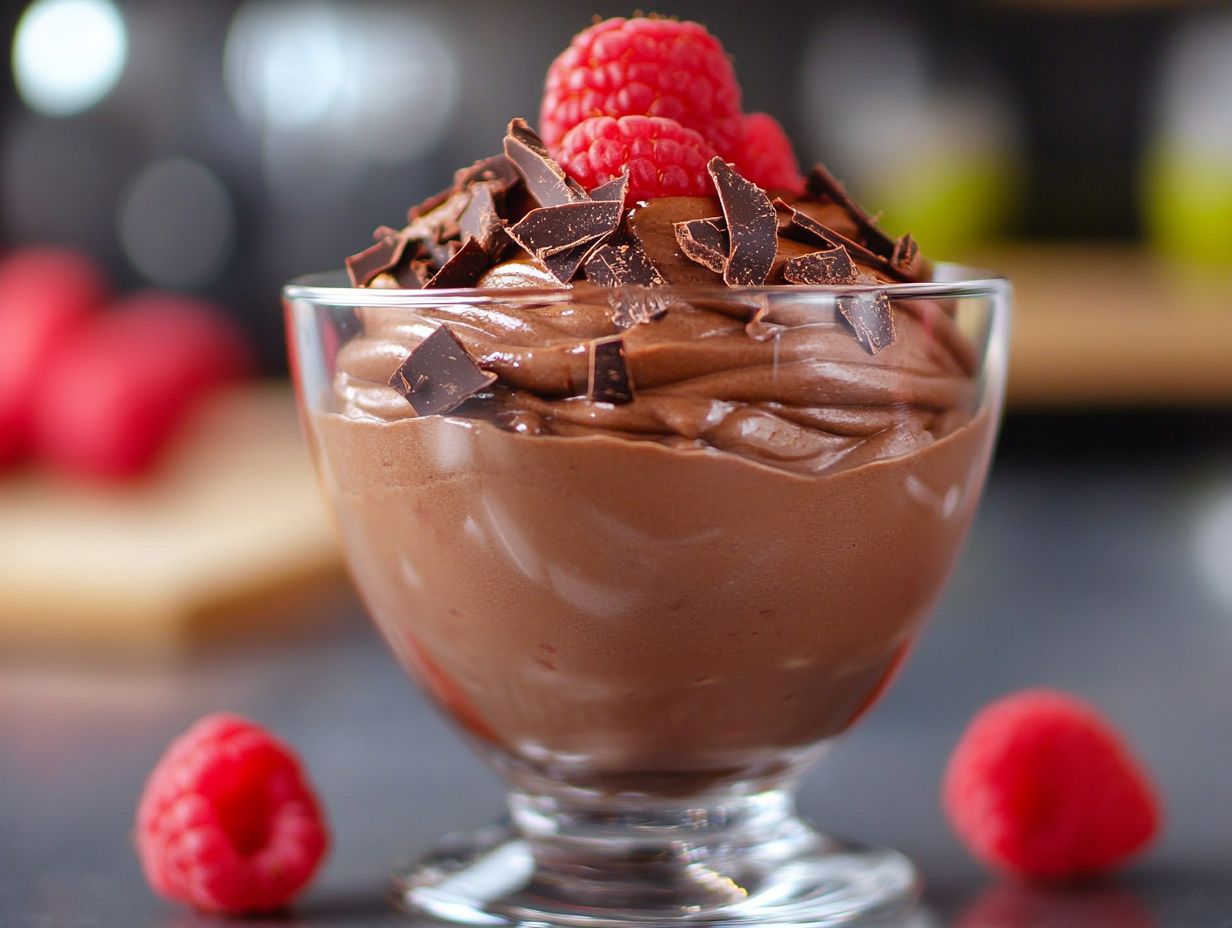
To achieve the perfect dessert texture, follow the recipe carefully and pay attention to details such as ingredient measurements, mixing techniques, and baking times. Using high-quality ingredients makes a difference.
What are common mistakes that can ruin a dessert’s texture?
Overmixing the batter, using expired or low-quality ingredients, not following the recipe accurately, and overbaking are common mistakes that can ruin a dessert’s texture. It is important to read the recipe carefully and follow it step by step.
How does the type of flour affect the texture of a dessert?
The type of flour used can greatly impact the texture of a dessert. For example, using cake flour results in a softer and lighter texture compared to all-purpose flour. Similarly, using almond flour can create a denser and chewier texture.
What are some tips for achieving the perfect texture in a gluten-free dessert?
When making a gluten-free dessert, use a blend of gluten-free flours such as almond flour, coconut flour, and tapioca flour to achieve a balance of texture and flavor. Adding a small amount of xanthan gum can also help with texture and binding.
How can I fix a dessert with a disappointing texture?
If your dessert turns out with a less than perfect texture, there are a few things you can try to fix it. For a dry dessert, brush it with simple syrup or flavored syrup to add moisture. If it is too dense, whipping the batter with some additional liquid can lighten it up. For a soggy dessert, bake it for a few more minutes to dry it out.

